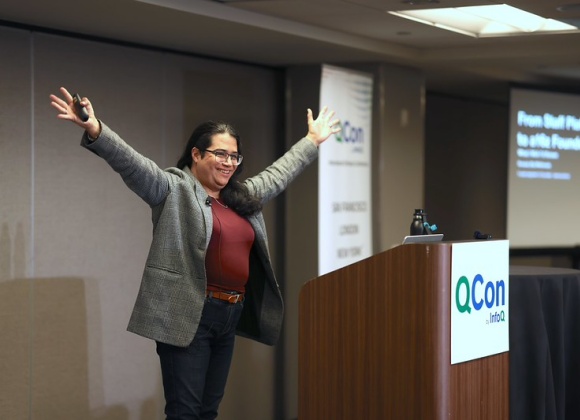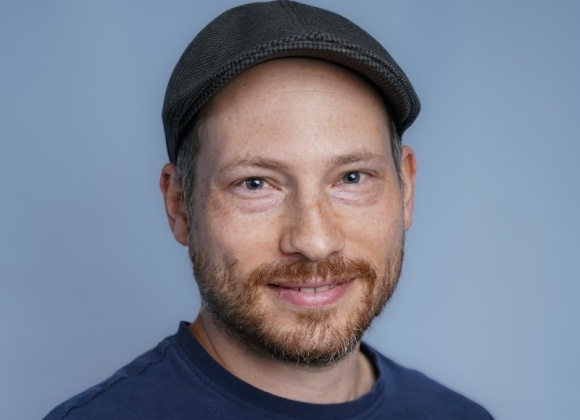This is the Engineering Culture Podcast, from the people behind InfoQ.com and the QCon conferences.
In this podcast Shane Hastie, Lead Editor for Culture & Methods, spoke Lee Cunningham of VersionOne about the results from the State of Agile Survey.
Key Takeaways
- Agile is not just something that developers do – it’s an enabler of business outcomes
- The emergence of multi-modal organisations where there are multiple different approaches being used simultaneously, which holds them back from progressing effectively
- Some organisations are adopting a Taylorism approach to agile adoption – get experts to tell us what to do and control the teams to abide by those rules
- The emergence of business value as an important measure, over productivity (although productivity is a necessary precondition for business value)
- Buying an expensive tool doesn’t make your agile adoption successful, in the same way that buying an expensive treadmill doesn’t make you fit – both need to be used effectively to deliver any value
Subscribe on:
Show Notes
0:25 - Introductions
1:25 - This is the 11th Annual State of Agile survey
1:35 - The multi-year trend for larger organisations to embrace agility
1:50 - Agile is not just something that developers do – it’s an enabler of business outcomes
2:08 - Where Agile is in the adoption curve – there is still a long way to go. Less than 60% of organisations that respond to the survey have half or more of their teams using agile approaches
2:48 - 80% of respondents see themselves as not fully mature in their agile practices
3:35 - The emergence of multi-modal organisations where there are multiple different approaches being used simultaneously, which holds them back from progressing effectively
4:28 - Executive sponsorship is a vitally important ingredient for a successful agile transformation
4:54 - The difference between Lean and Taylorism – who makes the decisions about making changes to work practices; an “expert” or the person doing the work
5:23 - Some organisations are adopting a Taylorism approach to agile adoption – get experts to tell us what to do and control the teams to abide by those rules
5:38 - These organisations are missing the “inspect and adapt” aspect and not getting valuable results from their process changes
6:20 - The value of consistency of process and the usefulness of common tools
7:20 - The challenge of finding common ground where different areas of the organisation have adopted different approaches
7:45 - Scaled Agile Framework is now the most widely adopted framework for enterprise agile adoption in large organisations
8:35 - The emergence of business value as an important measure, over productivity (although productivity is a necessary precondition for business value)
9:20 - Evidence of the disconnect between what is important at the strategic level and the activities at the team level across organisations
10:03 - The groundswell of interest in DevOps as evidenced by the survey results
10:50 - DevOps must support the need to aggregate the work of multiple teams
11:10 - The differences between the reasons for adopting agile and the benefits achieved from that adoption
11:25 - Top three reasons for adopting:
- Accelerate product delivery
- Manage changing priorities
- Increase productivity
11:38 - The top three benefits actually achieved_
- Manage changing priorities
- Improved project visibility
- Increased team productivity
11:57 - The importance of knowing why the organisation is adopting agile
12:45 - The emergent nature of many of the benefits – things that were not expected
13:47 - The prevalence of Scrum as the primary framework for agile adoption
14:45 - The lines between the brands are now very blurred – practices from Scrum, Lean and XP are in use in most Scrum implementations
15:25 - Exploring the use of specific practices
16:48 - The difference between self-organisation, and picking the practices which seem easy that seem to fit with the organisations current constraints
17:43 - Not enough freedom and empowerment for teams to resolve problems themselves
18:17 - The relatively high proportion of teams not using the strong technical practices, such as unit testing
19:35 - The unsustainable pace of work (69% or respondents said they were not practicing a sustainable pace)
20:05 - Over 50% of organisations using agile in outsourced projects
21:15 - The proportion of respondents achieving success from using an agile approach
22:13 - The largest challenge to successful adoption is (still) the mismatch between company culture and agile values
22:43 - Buying an expensive tool doesn’t make your agile adoption successful, in the same way that buying an expensive treadmill doesn’t make you fit – both need to be used effectively to deliver any value
23:18 - Successful agile adoption needs to be a collective initiative with support from the very top of the organisation
23:40 - The organisations who are really getting value from agile at scale are often the ones who have failed previously – they are able to take those learnings and improve their adoption approaches
24:35 - The current trend for “digital” transformation is a manifestation of the desire by organisations to take a lean approach. Digital and Agile are both instances of lean thinking and have a lot in common
25:14 - The challenges to adoption are well known, and organisations which continue to experience these problems are not feeling the pain from the challenges, yet; they haven’t been disrupted, yet
25:40 - The story of an organisation where the culture was so command-and-control based that the only people remaining were the ones who needed to be told what to do
27:06 - Tackling the “don’t scale agile” objections
28:03 - What scaling means in this context – agile is successful at the team level and there is a desire to make it happen at the corporate level
28:33 - Things that are necessary for success at the team level and how they can be replicated at the larger organisation level (or not)
29:14 - The conundrums of scaling are related to the widely variant ways of working across the organisation
30:05 - SAFe has the largest adoption rate of the scaling models (28%)
30:48 - SAFe is based on some solid Lean and Lean Economics theories
31:25 - Scrum-of-Scrums is the second most prevalent and it works up to a certain size and complexity
32:02 - LeSS and DAD far lower takeup levels
32:36 - Top tips for success in scaling agile adoption
32:58 - The importance of training for successful scaled adoption
34:05 - The value that having an external coach or consultant brings to the conversations around successful adoption
34:35 - The importance of building internal coaching capacity for large scale adoption
35:35 - Trends around tool development – simplified UI and open architecture which supports integration
Mentioned:



